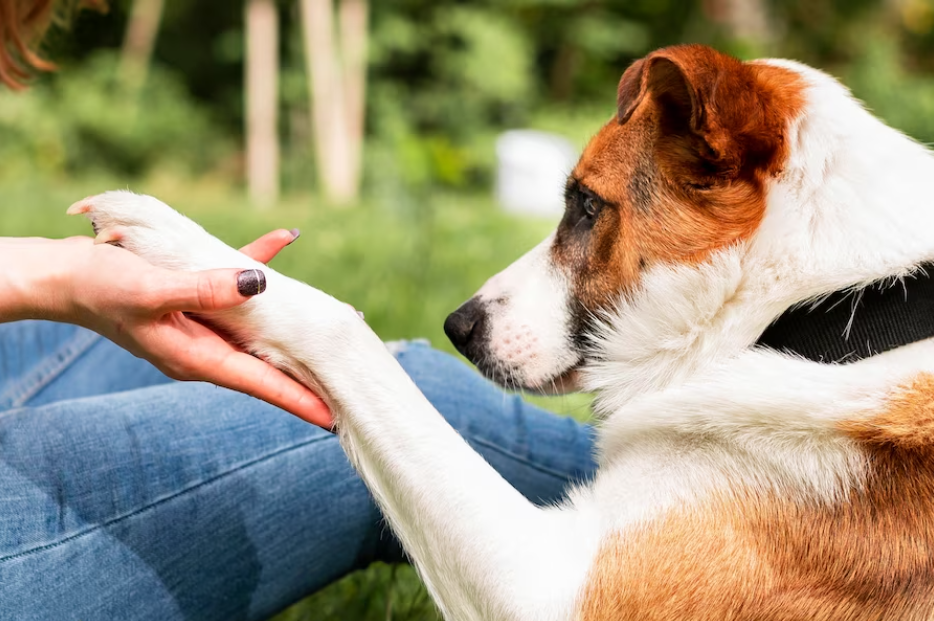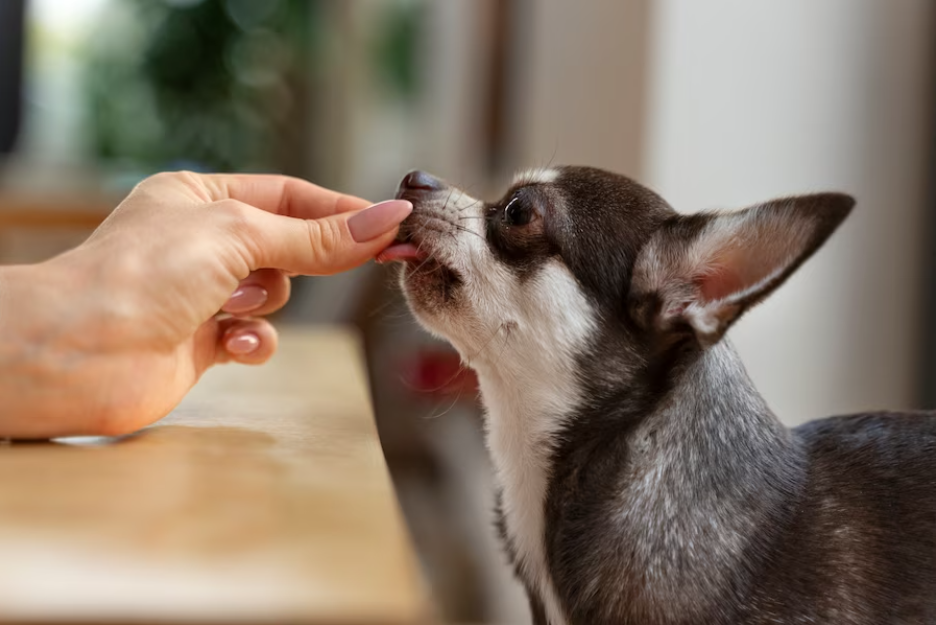How to Help Your Pet Adjust to a New Family Member

Bringing a new family member home is always exciting but it can be a challenging transition for your furry friend. Your pet, who has been the center of attention and the only “”child”” in the house, may feel threatened or anxious with this sudden change. It’s crucial to help them adjust to this new situation so that they don’t develop negative behaviors such as aggression or anxiety towards the newcomer. In this blog post, we will explore some tips on how to prepare your pet for a new family member and make their introduction smooth and safe for everyone involved. So grab your notebook and let’s get started!
Importance of helping pets adjust to new family members
Bringing home a new family member can be an exciting time, but it can also be stressful for your pets. It’s important to remember that introducing a new person or animal into the household can cause disruptions in their routine and environment.
Helping your pet adjust to the changes will ensure a smooth transition for everyone involved. Failure to do so may lead to behavioral problems such as aggression, anxiety, or depression.
Pets are very sensitive creatures and need time and patience when adjusting to change. Every pet is different and will react differently depending on its personality and previous experiences.
By taking steps to prepare both your pet and the new family member before they meet, you’ll minimize stress levels for everyone involved. Gradual introduction of scents, sounds, training sessions among other things will ease up tension when meeting.
In conclusion helping your pets adjust is key in ensuring peace within the home between all members including those with four legs!
Common reactions pets might have to new family members
When a new family member arrives, your pet might experience different reactions. Some pets might feel anxious or fearful, while others may become excited and curious.
Anxiety is a common reaction among pets when they encounter new people at home. This can result in them hiding more often than usual or avoiding contact with the newcomer. Fearful pets might exhibit trembling or whining behavior around the individual.
In contrast, some pets will show excitement upon meeting the new family member for the first time by barking loudly or jumping up and down out of joy. However, this kind of enthusiasm could also lead to unintentional injury to the person if not kept under control.
Moreover, some animals are simply indifferent towards their owners’ new friend or partner; this doesn’t necessarily mean that they don’t like them but maybe just need more time to adjust.
It’s important as a pet-owner that you understand these common behaviors so that you can help your furry friend cope with their emotions properly during such transitional periods.
Preparation Before the Arrival of the New Family Member
Preparing your furry friend for the arrival of a new family member is crucial for a smooth transition. First and foremost, it’s important to provide your pet with plenty of exercise and mental stimulation in the weeks leading up to the newcomer’s arrival.
Gradual introduction of new scents and sounds can help prevent any sudden surprises that could startle or overwhelm your pet. You can play recordings of baby cries or let them sniff baby items so they become familiar with these new smells and sounds.
Changes in routine and environment should also be introduced gradually. Gradually shift feeding times, walks, playtime schedules, etc., so that your pet gets used to the changes before the arrival of a newborn.
Training sessions are an excellent way to improve obedience and manners before introducing a new family member. Enrolling your pet in training classes will not only make them more well-behaved but also increase their socialization skills.
It’s essential to ensure all household members understand how best to approach pets as animals may become territorial if they feel threatened or scared by unfamiliar people coming near them.
Taking these steps can help you prepare both yourself and your furry friends for life together under one roof with a new addition!
Gradual introduction of new scents and sounds
When introducing a new family member to your pet, it’s important to understand that pets rely heavily on their sense of smell and hearing. The introduction of new scents and sounds can be overwhelming for them if not done gradually.
Before the arrival of the new family member, start by bringing in items with their scent such as clothing or blankets. Allow your pet to sniff and investigate these items while praising them for being calm.
Next, play recordings of the new family member’s voice or have them talk over the phone so that your pet becomes familiar with their sound. This will help prevent any fear or anxiety when they finally meet face-to-face.
During the initial introduction phase, continue with gradual exposure to scents and sounds by allowing supervised interactions between your pet and the new family member while offering treats as positive reinforcement.
It’s important to remember that every animal is different in terms of how quickly they adjust to change. Patience is key when it comes to helping your fur baby adapt to a new addition in the household.
Changes in routine and environment
When a new family member is introduced to the household, there are bound to be changes in routine and environment. These changes can be overwhelming for your pet, who thrives on familiarity and consistency.
It’s important to gradually introduce any changes that will affect your pet’s daily routine. Start by adjusting feeding times or exercise schedules slowly over time. This way, your pet won’t feel like everything has changed all at once.
In addition, consider making alterations to their environment as well. If you’re adding furniture or rearranging the room for the new family member’s arrival, try doing it in phases so that your pet doesn’t feel overwhelmed by sudden change.
Remember that pets are creatures of habit – they rely on routine and structure to help them navigate their world. By making gradual adjustments instead of sudden ones, you can help ease them into a new normal without causing undue stress or anxiety.
Being mindful of how even small changes might impact your pet during this transition period is key to ensuring they adjust smoothly and happily!
Training sessions to improve obedience and manners
Training sessions are an integral part of helping your pet adjust to a new family member. These sessions not only improve obedience and manners but also build trust between you and your pet.
To start, identify areas where your pet needs improvement, such as jumping on people or barking excessively. Once identified, set specific goals for each training session and make sure to use positive reinforcement techniques like treats or praise when they meet those goals.
Consistency is key in these training sessions. Set aside regular times during the day to work with your pet so that they develop a routine and know what’s expected of them. Make sure that everyone in the household follows through with these expectations to avoid confusing or frustrating your furry friend.
Remember, every pet learns at their own pace, so don’t get discouraged if progress seems slow at first. Give them plenty of time and patience while keeping expectations realistic.
Above all else, be patient and kind during training sessions. Training should never involve physical punishment or negative reinforcement methods as this can cause fear or aggression towards both you and any new family members.
By consistently working with your pets through positive reinforcement-based training sessions, you’re setting them up for success in adjusting to new family members while building a stronger bond along the way!
Introducing the New Family Member to Your Pet
Once you’ve prepared your pet for the new family member, it’s time to introduce them. It can be a stressful experience for both your pet and the new arrival, so it’s important that you take things slow and steady.
The first step is to make sure that initial introductions are safe and controlled. Keep your pet on a leash or in their crate while letting the new family member enter the room. Don’t force interaction between them right away, but allow them to sniff each other out gradually.
It’s important that you read and understand your pet’s body language during this phase as well. Signs of aggression or fear should be addressed immediately by removing one of the parties from the situation until they calm down.
Maintaining calm and positive energy during these introductions is also crucial. Pets can sense tension in their environment, so try to create a relaxed atmosphere for everyone involved.
Remember, introducing a new family member to your pets takes patience, understanding, and lots of positive reinforcement. With time and effort put into socialization training sessions, chances are high that everyone will soon learn how to coexist peacefully under one roof!
Safe and controlled first introductions
When introducing your pet to a new family member, the first meeting is crucial. It’s important to make sure that both your pet and the new arrival feel safe and comfortable during their initial introduction.
Before bringing them together, it’s a good idea to give your pet some time to adjust to any changes in routine or environment that might have occurred since you started preparing for the new arrival. This will help reduce any stress or anxiety they might be feeling.
When it comes time for the first introduction, make sure that both animals are safely restrained on leashes or in carriers so they can’t harm each other if things don’t go as planned. You should also keep treats handy so you can reward positive behavior from both pets.
As you begin allowing them to interact with one another, pay close attention to their body language. Signs of aggression such as growling or baring teeth should be addressed immediately by separating them and trying again later when everyone has calmed down.
Remember that patience is key during this process. Some pets may need more time than others before becoming comfortable around a new family member. With careful planning and controlled introductions, however, you can help ensure a smooth transition for everyone involved.
Reading and understanding your pet’s body language
Reading and understanding your pet’s body language is crucial when introducing a new family member. Pets communicate through their body language, which can indicate whether they are comfortable or stressed in a particular situation.
One sign that your pet may be uncomfortable is if they are tucking their tail between their legs. This indicates fear or anxiety and should signal to you to slow down the introduction process.
Another important aspect of reading your pet’s body language is observing their facial expressions. Dilated pupils, wide eyes, or ears back against the head could mean that your pet is feeling threatened or scared.
On the other hand, relaxed body posture with tails wagging and soft eyes usually means that pets feel calm and happy around the new family member.
It’s also essential to pay attention to vocalizations such as growling or barking. These sounds can indicate aggression or discomfort from pets towards unfamiliar people.
Taking time to understand and read your pet’s body language during introductions will help you create an environment where everyone feels safe and at ease around each other.
Tips for maintaining calm and positive energy during introduction
Introducing a new family member to your pet can be a stressful experience for both the pet and the owner. However, maintaining calm and positive energy during this time is crucial in ensuring a successful introduction. Here are some tips that can help you maintain that positive energy:
Firstly, try to remain calm yourself. Pets have an excellent sense of their owner’s emotions, so if you’re anxious or stressed out, they’ll pick up on it too.
Secondly, use treats and rewards as positive reinforcement during introductions. This will create a positive association with the new family member.
Thirdly, keep introductions short and sweet at first. Gradually increase the amount of time spent together as your pet becomes more comfortable with the new family member.
Fourthly, give your pet plenty of space if they need it. It’s essential to respect their boundaries and not force them into situations that make them uncomfortable.
Remember to praise your pet when they behave well around the new family member. Positive reinforcement is key in helping pets adjust to change positively.
By following these tips for maintaining calm and positivity during introductions between pets and new family members, you can help ensure a smooth transition for everyone involved.
Post-Introduction Phase
After the initial introduction, it’s important to continue monitoring your pet’s behavior towards the new family member. Even if the first meeting went well, pets may still need time to fully adjust and accept their new sibling.
One way to help with this adjustment period is by gradually increasing supervised interaction between your pet and the new family member. This can include playing games together or going on walks as a group.
It’s also important to maintain consistency in routine and training for both pets and humans. Keep up with regular feeding times, exercise routines, and training sessions for your pet while also prioritizing bonding time with the new family member.
As always, observe your pet’s body language during these interactions. Signs of aggression or discomfort should be addressed immediately through separation or professional help.
Remember that every pet adjusts differently – some may take longer than others but consistent positive reinforcement will ultimately lead to successful socialization among all members of the household.
Seeking Professional Help
If you’ve tried all the tips and tricks to help your pet adjust to a new family member, but there still seems to be no improvement or progress, it may be time to seek professional help.
A professional trainer can provide specialized guidance and support in addressing any behavioral issues that arise during this transition period. They can also offer personalized training sessions for both your pet and family members, ensuring everyone is on the same page when it comes to proper handling and communication with your furry friend.
When seeking professional help, it’s important to choose a reputable trainer who has experience working with pets in similar situations. Check reviews, ask for recommendations from friends or fellow pet owners, and schedule a consultation before committing to any services.
In some cases, consulting with a veterinarian may also be necessary if there are underlying health concerns affecting your pet’s behavior. A vet can assess any physical conditions that may be contributing to stress or anxiety in your pet.
Remember that seeking professional help is not only beneficial for your pet’s well-being but also helps strengthen the bond between you and them as they adjust to their new family member.
Conclusion
Helping your pet adjust to a new family member is a crucial step towards ensuring harmony and happiness in your home. By taking the necessary steps before, during, and after the introduction of the new family member, you can help reduce stress and anxiety for both your pet and yourself.
Preparing ahead of time by introducing new scents, sounds, changes in routine and environment as well as training sessions will go a long way in making the transition smoother. Always watch out for signs that indicate how comfortable or uncomfortable your pet is feeling throughout the process.
Introducing a new family member to an existing furry friend may be challenging at times but following these tips will help make it easier for everyone involved. Remember to seek professional help when things get tough so you can ensure that everyone is happy under one roof.
By prioritizing pet adjustment and socialization with their human families, we build stronger bonds between ourselves and our pets. With patience, positivity, love —and perhaps some treats!— we can create harmonious relationships between all members of our blended households.



